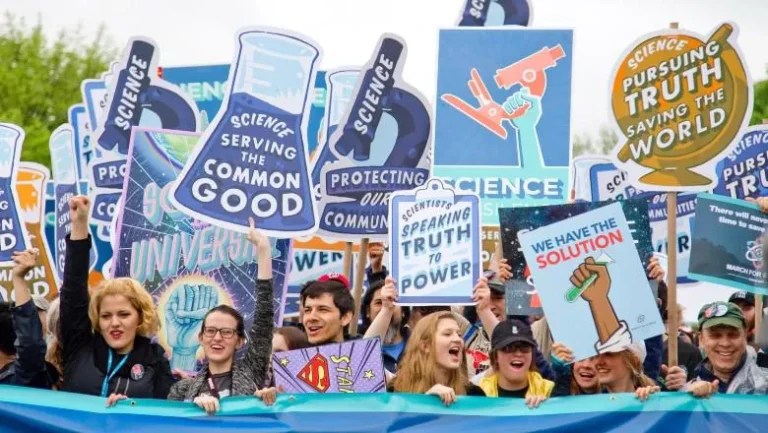The Post-Truth Pandemic: Navigating the Murky Waters of Misinformation
The digital age, while ushering in unprecedented connectivity and information access, has also birthed a shadow pandemic: the proliferation of misinformation and conspiracy theories. While “fake news” is not a new phenomenon, some scholars argue that we are now living in a “post-truth” era, where objective facts hold less sway than emotionally charged narratives and personal beliefs. The COVID-19 pandemic, with its inherent uncertainties and rapidly evolving scientific understanding, became a fertile breeding ground for such narratives, exacerbating existing societal anxieties and mistrust. The case of Dr. Carrie Madej, an osteopathic physician who falsely claimed that COVID-19 vaccines alter human DNA, exemplifies the challenges we face in combating misinformation in the digital age. Her video, viewed hundreds of thousands of times across various platforms, demonstrates the power of a single misleading narrative to capture public attention and sow distrust in established scientific consensus.
The rapid rise and pervasive influence of social media platforms have fundamentally altered the information landscape, contributing significantly to the spread of conspiracy theories. Unlike traditional media outlets, which typically employ fact-checking and editorial oversight, platforms like Twitter and Facebook provide open forums for anyone to share information, regardless of its veracity. While this democratization of information can empower marginalized voices and facilitate social movements, it also creates a breeding ground for misinformation. The absence of gatekeepers and the algorithmic amplification of engaging content, regardless of its accuracy, contribute to the rapid dissemination of false narratives. In the case of Dr. Madej’s video, its viral spread underscores the ease with which misinformation can bypass traditional media safeguards and directly reach vast audiences.
While Dr. Madej employed scientific terminology in her video, her conclusions were fundamentally flawed, demonstrating how misleading information can masquerade as credible scientific discourse. She utilized the example of genetically modified food to raise unsubstantiated concerns about the potential alteration of human DNA through vaccination. This tactic, leveraging existing anxieties about scientific advancements, is characteristic of many conspiracy theories. Furthermore, Dr. Madej’s status as a physician lent a veneer of credibility to her claims, making them more persuasive to those who might otherwise be skeptical. This highlights the danger of misinformation emanating from individuals in positions of authority, as it can exploit existing trust and erode public confidence in legitimate scientific institutions.
The challenge of combating online misinformation is further complicated by the delicate balance between protecting public health and upholding freedom of speech. Social media companies like Facebook have taken significant steps to remove misleading content related to COVID-19, including Dr. Madej’s video. However, these actions raise concerns about censorship and its potential to fuel further distrust. While censorship can effectively limit the spread of false narratives, it does not address the underlying reasons why people believe them. Furthermore, it can create a perception of suppression, ironically reinforcing the very conspiracy theories it aims to debunk. This creates a conundrum: how can we effectively combat misinformation without infringing on fundamental freedoms and inadvertently exacerbating existing mistrust?
The erosion of trust in government and scientific institutions is a key factor contributing to the rise of conspiracy theories. Historical instances of unethical scientific practices, such as the Tuskegee Syphilis Study, have understandably fueled skepticism and suspicion, particularly within marginalized communities. In the context of the COVID-19 pandemic, this pre-existing mistrust created fertile ground for conspiracy theories to flourish. The rapid development and rollout of vaccines, coupled with evolving scientific guidance, contributed to a sense of uncertainty and vulnerability, making people more susceptible to misleading narratives. Addressing this underlying mistrust is crucial to effectively combatting misinformation.
Experts suggest that transparency and open communication from government and scientific institutions are essential to rebuilding public trust and countering the spread of misinformation. Journalists like Peter Pomerantsev argue that transparency, rather than censorship, is the most effective antidote to fake news. By providing clear, accessible, and evidence-based information, we can empower individuals to critically evaluate information and make informed decisions. Initiatives like the BBC’s dedicated online sections debunking conspiracy theories represent a positive step towards combating misinformation through transparency and education. These efforts aim to address the root causes of mistrust by providing readily available, fact-checked information that directly counters misleading narratives. While achieving complete transparency may be a utopian ideal, fostering a culture of open communication and evidence-based decision-making is crucial to navigating the complex information landscape of the digital age.


